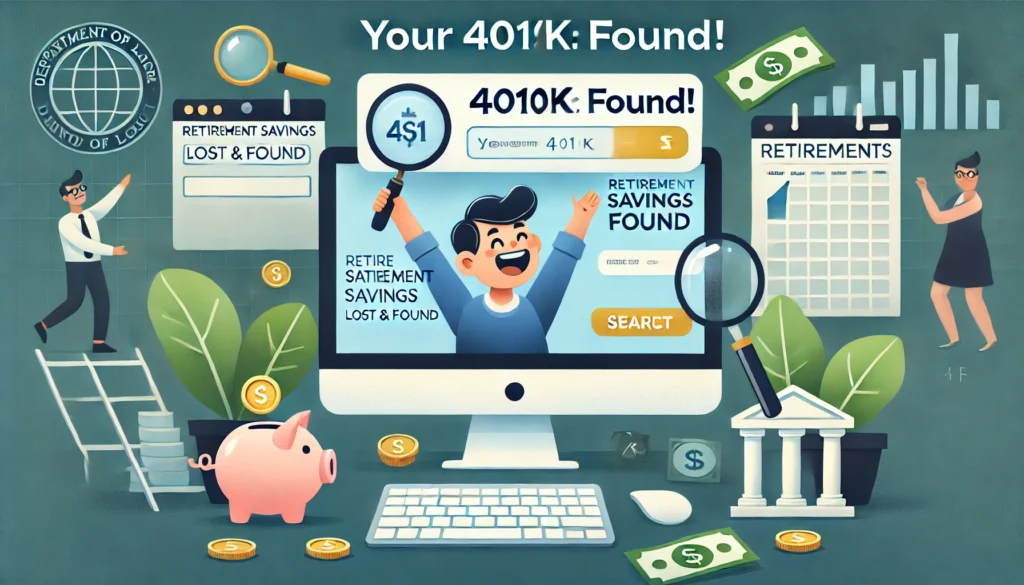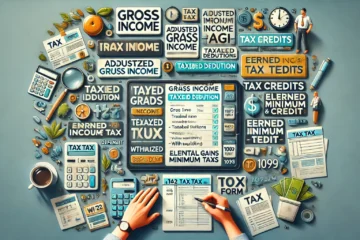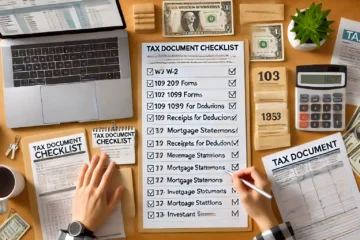Changing jobs or navigating life transitions can often lead to misplaced priorities—and misplaced retirement accounts. Believe it or not, millions of dollars in 401(k)s and pensions go unclaimed each year. Thankfully, the U.S. Department of Labor has introduced a new tool to help you reconnect with your lost savings.
Let’s explore how this tool works, what it can do, and how to use it without getting overwhelmed.
Why This Tool Matters
Did you know that roughly 25 million Americans have unclaimed retirement accounts? According to the Government Accountability Office (GAO), this adds up to billions of dollars in forgotten funds.
Why does this happen?
- People forget to roll over 401(k)s when they leave a job.
- Companies merge, change plan providers, or shut down, making records harder to track.
- Outdated contact information prevents plan administrators from reaching former employees.
Even a small balance can have a significant impact over time. For instance, $5,000 left untouched in a 401(k) could grow to over $38,000 in 30 years with an average annual return of 7%.
What is the Retirement Savings Lost & Found Tool?
The Retirement Savings Lost & Found Tool is a free online database that helps you track down old employer-sponsored retirement plans. By collecting data from employers and plan administrators, it simplifies the search for forgotten accounts.
How It Works:
- Visit the Department of Labor’s Retirement Savings Lost & Found tool.
- Enter basic details like your name, Social Security number, and former employers.
- The system searches for accounts linked to your work history.
- If a match is found, you’ll get contact details for the plan administrator to reclaim your funds.
What Can You Find?
The tool can help track down:
- 401(k) Accounts: Perfect for when you didn’t roll over funds after changing jobs.
- Pension Plans: If you worked for a company offering a pension, your benefits may still be waiting.
- Other Employer-Sponsored Accounts: These include SEP-IRAs or SIMPLE IRAs from smaller businesses.
Risks and What to Watch Out For
While the tool is a great resource, it isn’t perfect. Keep these points in mind:
- Incomplete Data: The database depends on accurate employer information. If the data isn’t up to date, your search may come up empty.
- Cybersecurity Concerns: Always double-check that you’re on the official Department of Labor site before entering personal information to protect from scams.
- Follow-Up Needed: The tool gives you the contact details, but you’ll need to take the next steps to recover your money.
Pro Tip: What If It Doesn’t Work?
If the database doesn’t yield results, don’t give up! You can also:
- Contact your former employer or plan provider directly.
- Use other tools like the National Registry of Unclaimed Retirement Benefits.
- Check with your state’s unclaimed property office, which may list lost retirement funds.
Tips to Use the Tool Effectively
To get the best results, keep these steps in mind:
- Gather Information: Have your work history, Social Security details, and any old retirement plan documents ready.
- Verify Matches: Double-check any results with your own records.
- Act Quickly: Once you have the plan administrator’s details, follow up promptly to avoid delays.
For ideas on what to do with recovered 401(k) funds, check out our blog post on 401(k) options when switching jobs.
Stay Organized to Prevent Future Issues
While this tool is useful, staying organized can help you avoid losing track of accounts in the first place.
- Consolidate Accounts: Roll over old 401(k)s into an IRA or your current employer’s plan.
- Keep Records: Maintain a simple list of all your employers and their plan providers.
- Update Contact Info: Notify plan administrators if you move or change your name.
Final Thoughts: Reclaim Your Retirement Savings
The Retirement Savings Lost & Found tool is an exciting step forward for anyone wondering, “What happened to my 401(k)?” It’s free, easy to use, and could help you uncover forgotten funds.
Why not start your search today? Visit the Department of Labor’s website to see if there’s hidden money waiting for you. Every dollar counts, especially when it comes to building a secure future.

Sources
- U.S. Department of Labor: Retirement Savings Lost & Found
- Government Accountability Office (GAO): Report on Unclaimed Retirement Accounts
- Forbes: New Retirement Tool Helps Track Forgotten Savings
Disclaimer: this is not legal, tax, accounting, investment nor other professional advice. Consult an advisor and do your own research for your individual situation.



0 Comments